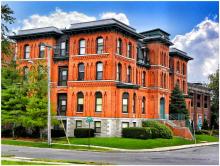Realizing Ambitions of Open Access in Marin County, California
Creative efforts are underway in Marin County, California to bring fiber connectivity to underserved pockets of the community and eventually the whole area. Digital Marin, currently housed within the county’s Information Services and Technology Department, is coordinating the project, and is leaning towards a municipally-owned, open-access solution modeled after Ammon’s standout network in Idaho.
Just across the Golden Gate Strait from San Francisco, Marin County is home to about 265,000 residents, as well as the Muir Woods National Monument, a County Civic Center designed by Frank Lloyd Wright, and nearly 73 miles of coastal trail. Despite largely being considered an urban county, Marin also includes suburban and rural areas with 40 percent of the county classified as protected park land.
When it comes to Internet connectivity, the area is peppered with what Marin County resident and Digital Marin Executive Steering Committee member, Bruce Vogen, calls “donut holes of high-quality Internet access.” An unknown provider built a DSL network in the region many years ago and then Comcast later bought and inherited the antiquated infrastructure. Soon after, AT&T entered the market but selected only the most profitable neighborhoods to serve. All 90,000 of the county’s urban households can access the Internet through Comcast, but just 20,000 of these homes have access to the archipelago of AT&T’s fiber network. In any case, Marin’s urban areas are either subject to monopoly or duopoly market control. It has long been apparent there is a digital divide in Marin County, but it wasn’t until the 2022 FCC maps were released that the contours of this divide came into focus.




